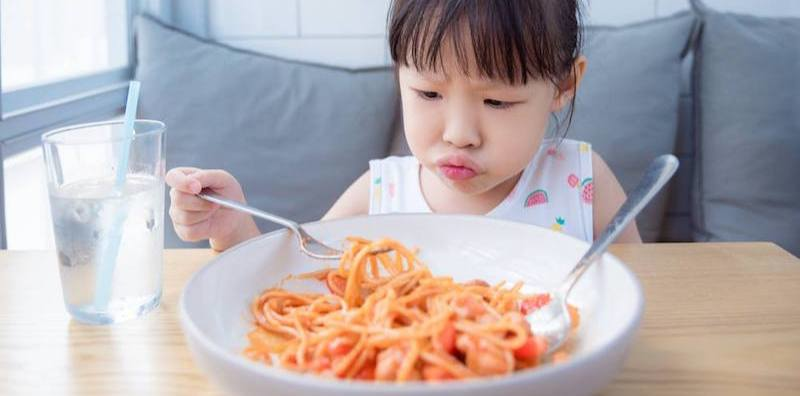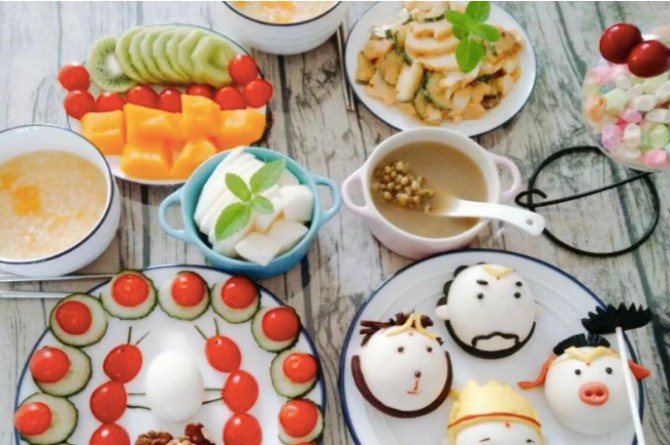Study: How Children Prefer to Eat Based on Gender and Age
by on 02/08/2025 ...

Here’s a simple hack to take away the stress of persuading your child to eat her veggies.
If you hate mealtimes with your picky eater, then this article will bring you hope. A new study suggests that presenting their meals in certain ways could affect whether a child will eat the meal or not. What’s more, presentation style should differ between boys and girls for more success. Here’s what the study reveals and some more tips on how to get a child to eat when they refuse.

Could the way you present the food better encourage your picky eater to eat? Science thinks so.
Food Presentation Can Help Your Child Eat His Veggies, Says Study
A new study, which was published in the Journal of Sensory Studies, shares some interesting results in relation to picky eating habits among kids: Apparently, little boys and girls of different ages have different inclinations to meals based on how they’re arranged.
The study was conducted to analyse if kids favoured their meals organised in a specific way, and if the child’s gender or age affected their choices.
Annemarie Olsen, the author of the study, knows that children tend to like their meals arranged in a specific manner and order. However, this knowledge was only based on stories from parents.
She admits that “we do not have much evidence-based knowledge about how children sort and eat their food.” Knowing whether children’s preferences are scientifically backed can be “very relevant when… we want our children to eat more vegetables – or eat their food in general,” says Olsen.
How the Study Was Conducted
For their study, scientists recruited 100 school children who were between seven and eight years old, and 12 to 14 years old. The researchers then tasked them to order pictures of six different meals presented differently based on their liking. The meals were presented in three ways:
- ingredients arranged independently such that they didn’t reach one another
- a meal consisting of isolated ingredients and ingredients which were well-combined
- all of the ingredients stirred into a smooth mixture
By ordering the photos based on how they liked the food being presented, scientists were able to distinguish which forms of food arrangement the children favoured most, and which they favoured least.
How to Get a Child to Eat When They Refuse
One of the key methods to help kids in eating their fruits and veggies is to organise them in small servings.
Making the food easily accessible so they can reach for it also helps.
The study suggests that there’s another key player. How the food is actually presented can influence whether the children eat or not.
“At the same time, it would be nice to know whether there are big gains to be made just by arranging food on the plate in a certain way,” added Olsen.
The results of the study showed that:
- Girls between 7-8 years old favoured the food presented separately.
- Boys who were 7-8 years old weren’t affected by how their meals were presented.
- Older children aged 12 – 14 years old liked their food presented in two styles:
- all the ingredients mixed together
- or delivered as a combination of ingredients on their own with food that’s stirred together.
According to Olsen, these results suggest that when it comes to seven- and eight-year olds, parents should arrange their food separately on the plate.
“The child can mix the food when the various elements of the food are separated on the plate, while the reverse is not possible,” explains Annemarie.

Presenting food mixed together will make it less likely for your child to try it out. | Image source: stock photo
Other Tips on How to Get a Child to Eat When They Refuse
In our previous article, we discuss five tips to on how to get a child to eat when they refuse:
- Be creative with your food presentation. Cutting food into different shapes and letting your child be familiar with different food textures by allowing her to touch her food will help. Making the food look tastier than it actually is makes it easier to convince your kid to eat it.
- Mix what they don’t like in other foods. For instance you can play with textures, colours and mix flavours. Combine veggies in the patties or meatballs that he might like. Also, if your child doesn’t like a certain dish, just think of different ways to serve and cook the same foods.
- Involve them in the process. Growing your own food and cooking it on your own definitely brings about some level of satisfaction. Try involving your toddler in growing his own leafy vegetables. That way, he will be more appreciative and willing to take in vegetables that he grew himself.”
- Be patient and don’t pressure them. Expose the kids to different varieties of foods without pressuring them too much. Consider serving a new type of food along with some other food that you know that your child likes to see if she’ll eat it – just don’t force the child to eat food.
- Talk to your child about other good aspects of food – other than its flavour. Encourage your child by talking about a food’s colour, shape, aroma and texture — not whether it tastes good. Focusing less on the taste will make kids think that the food really doesn’t taste that bad!
References: Economic Times
This article was first published on theAsianParent.
































